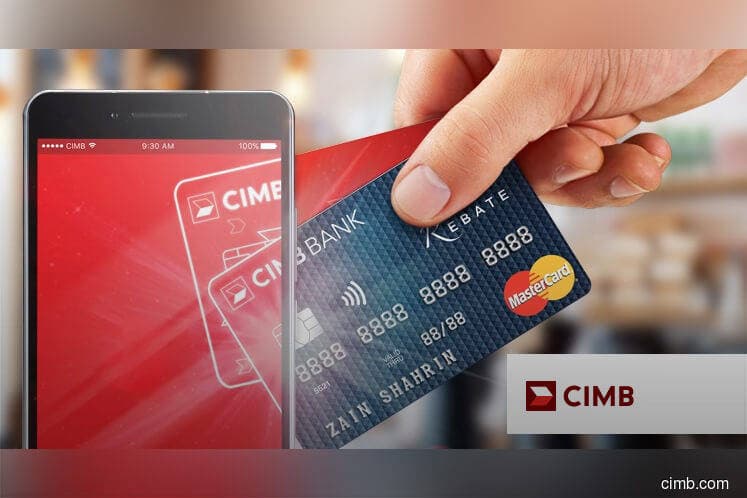
This article first appeared in The Edge Malaysia Weekly on February 11, 2019 - February 17, 2019
CIMB Group Holdings Bhd is counting on an all-digital strategy to help it make inroads in the Philippines, an attractive but tough banking market whose internet and mobile banking penetration is among the highest in the world.
It formally launched operations there on Jan 29, becoming the country’s first all-digital bank.
Analysts say CIMB Group will be a test case for other banks looking to make strides in one of Asia’s fastest-growing economies. Most foreign banks, including Maybank Philippines Inc, the only other Malaysian-owned commercial bank there, employ a branch-heavy model and struggle to make an impact.
It is a competitive market, with about 21 universal banks, 22 commercial banks, 57 thrift banks, 492 rural banks, 40 credit unions and 6,267 non-banks with quasi-banking functions.
“Starting a traditional banking business in new markets is never easy, especially without brand and scale. But the advent of disruptive technology and financial technology (fintech) will allow banking players to enter markets differently. Our approach in the Philippines is anchored in this principle,” group CEO Tengku Datuk Seri Zafrul Aziz tells The Edge.
As an “all-digital, mobile-first” bank, CIMB Bank Philippines Inc’s (CIMB Philippines) consumer banking proposition is backed by a suite of products accessible online and via mobile, he says.
“We also have a partnership-heavy distribution strategy, working with known local brands to provide electronic distribution at scale. This is what we mean by achieving brand recognition and scale quickly,” he adds.
CIMB Philippines’ partners include 7-Eleven and DragonPay, with a total of 8,000 customer touchpoints nationwide.
That CIMB Group has chosen the Philippines from all its regional markets to embark on an all-digital strategy is no surprise.
Filipinos were the world’s heaviest internet users last year despite relatively slow connection speeds, spending an average of 10 hours and two minutes online a day. This was according to Digital 2019, a report released last month by Hootsuite and We are Social, showing people’s online behaviour around the world.
Overall, there were 76 million internet users in the country. Mobile banking usage reached 54%, higher than the global average of 41%.
In December last year, CIMB Group also embarked on a digital banking proposition in Vietnam, launching its first digital lounge in Ho Chi Minh City and its “Octo” mobile banking app. But, unlike in the Philippines, it is also counting on branches to operate there. It set up its first Vietnamese branch, in Hanoi, in 2016.
“We have been making steady progress in Vietnam with the business growing organically,” Zafrul says, without elaborating.
CIMB Group is not opting for a branch banking model in the Philippines. It currently has only one branch in the Philippines, it is understood, to mainly fulfil the banking licence requirement.
“Consumers of today and tomorrow need innovative financial solutions that are relevant to their needs as well as help them get ahead and advance their financial well-being, but they don’t necessarily need a physical bank,” says Vijay Manoharan, CEO of CIMB Philippines.
On its website, CIMB Philippines says it offers, among others, bank account opening in just 10 minutes, the best in market interest rates for savings accounts, no transaction fees and withdrawal options at over 8,000 partner locations and over 20,000 ATMs nationwide for free — all through its Octo mobile app.
Its “UpSave Account” offers an interest rate of 2% a year, which it claims is eight times higher than that of competitors.
When asked how soon he anticipates CIMB Philippines making a profit, Zafrul says: “We have some internal benchmarks and milestones. We feel comfortable with the investments we are undertaking, and are currently focused on building a robust digital business and bringing high-value propositions to the market to drive customer acquisition.”
Of CIMB Group’s overseas operations, Indonesia, Singapore and Thailand are its biggest contributors to earnings.
The group also recently received regulatory approval from the Securities and Exchange Commission of the Philippines for its investment banking joint venture, CIMB Bancom Capital Corp, in the country.
According to Zafrul, CIMB Group holds a 60% stake in Bancom Capital Corp while Bancom II Consultants Inc and PLP Group Holdings Inc each holds 20%.
“This is anchored in bringing CIMB’s Asean investment banking brand to Filipino corporates wanting to expand in the region and originating in-bound transactions from Asean to the Philippines. It’s an extension of our very successful Asean investment banking franchise,” he says.
The Philippines is a promising market, considering its economy has been the fastest-growing in Asean in recent years. Last year, the economy grew 6.2%, the slowest in three years, but still among the fastest in Asia.
The World Bank has projected that the economy will grow 6.5% this year and by a slightly faster 6.6% in 2020 and 2021. Its forecasts are below the Philippine government’s target range of 7% to 8% yearly until 2022.
Save by subscribing to us for your print and/or digital copy.
P/S: The Edge is also available on Apple's AppStore and Androids' Google Play.